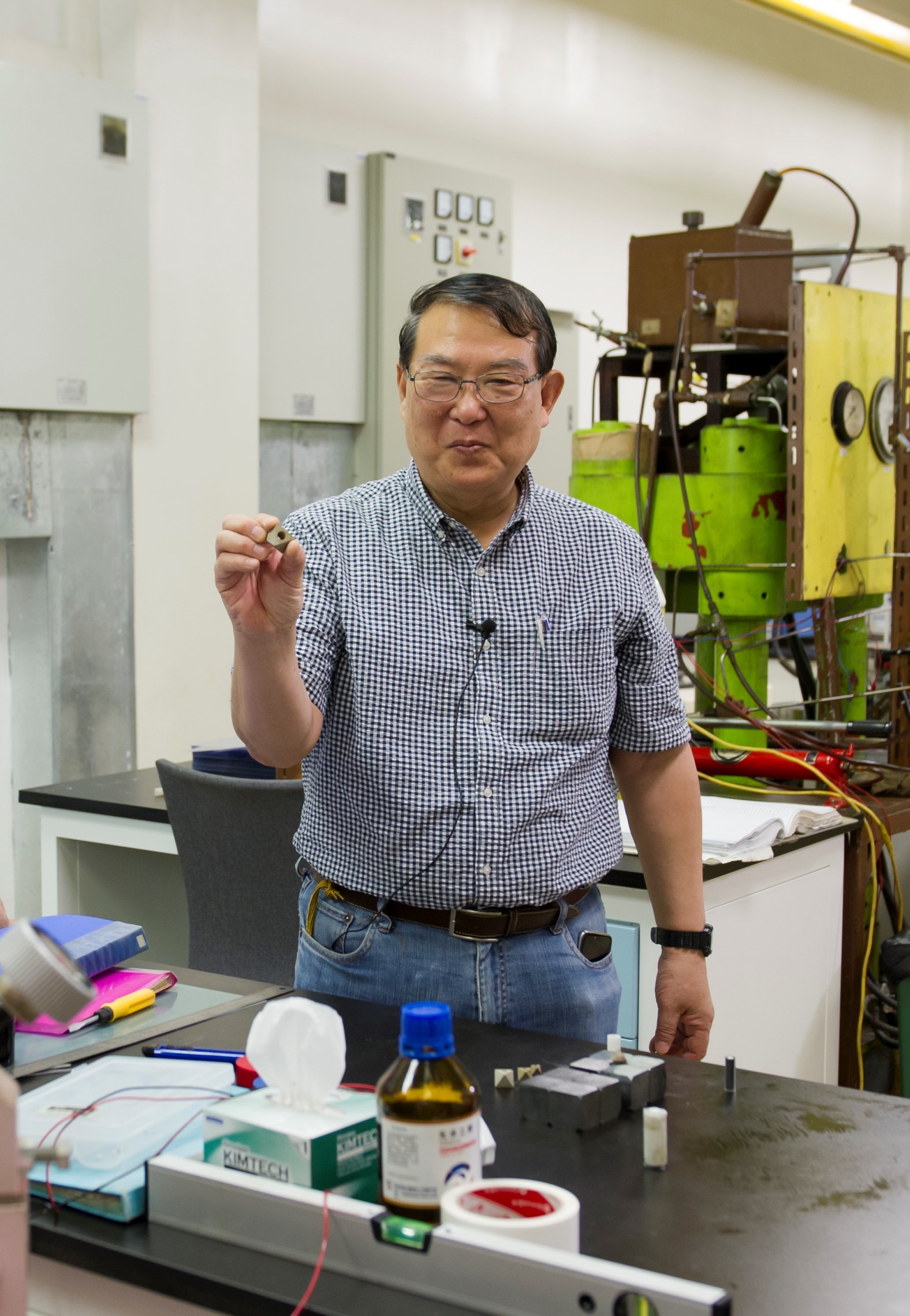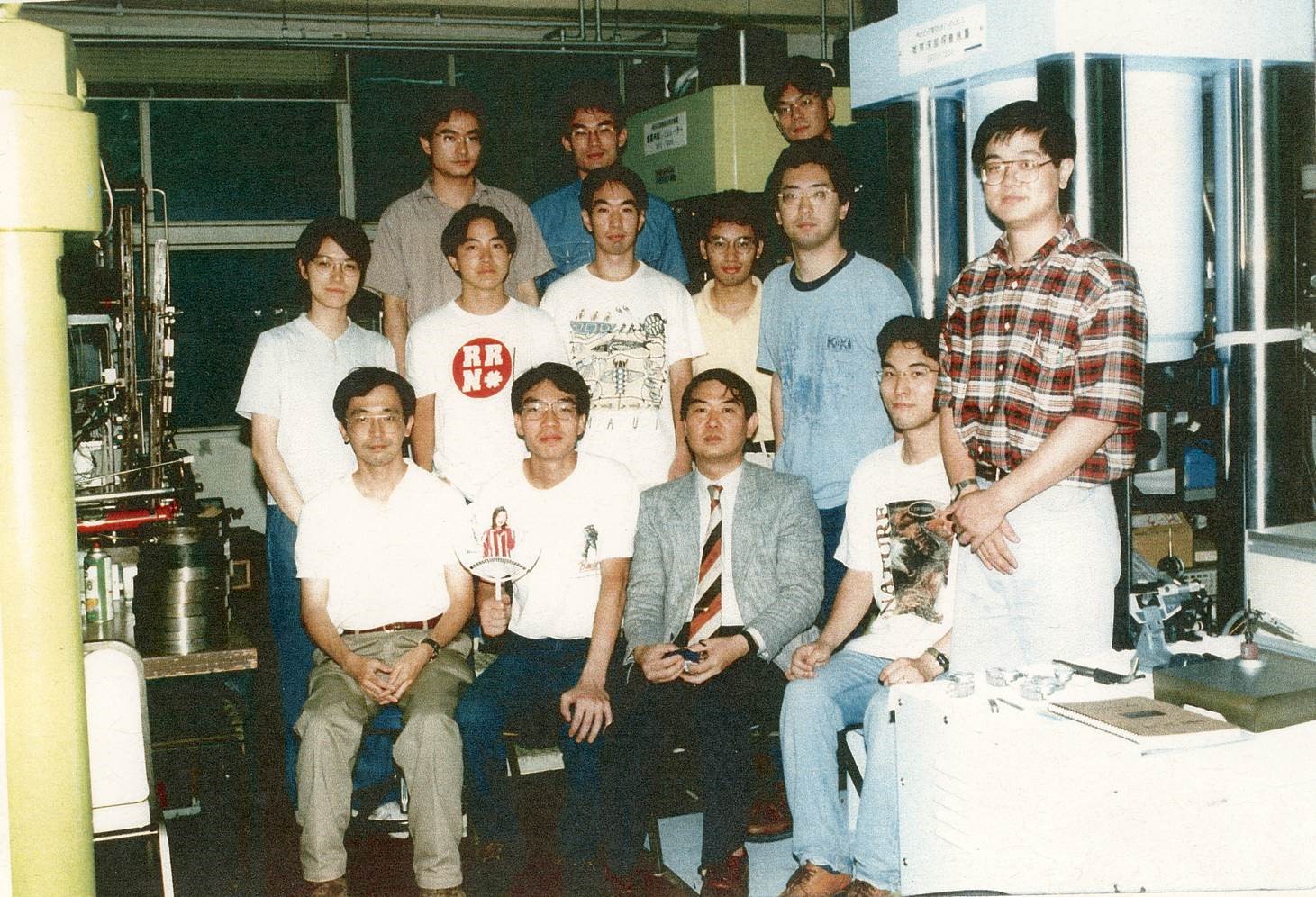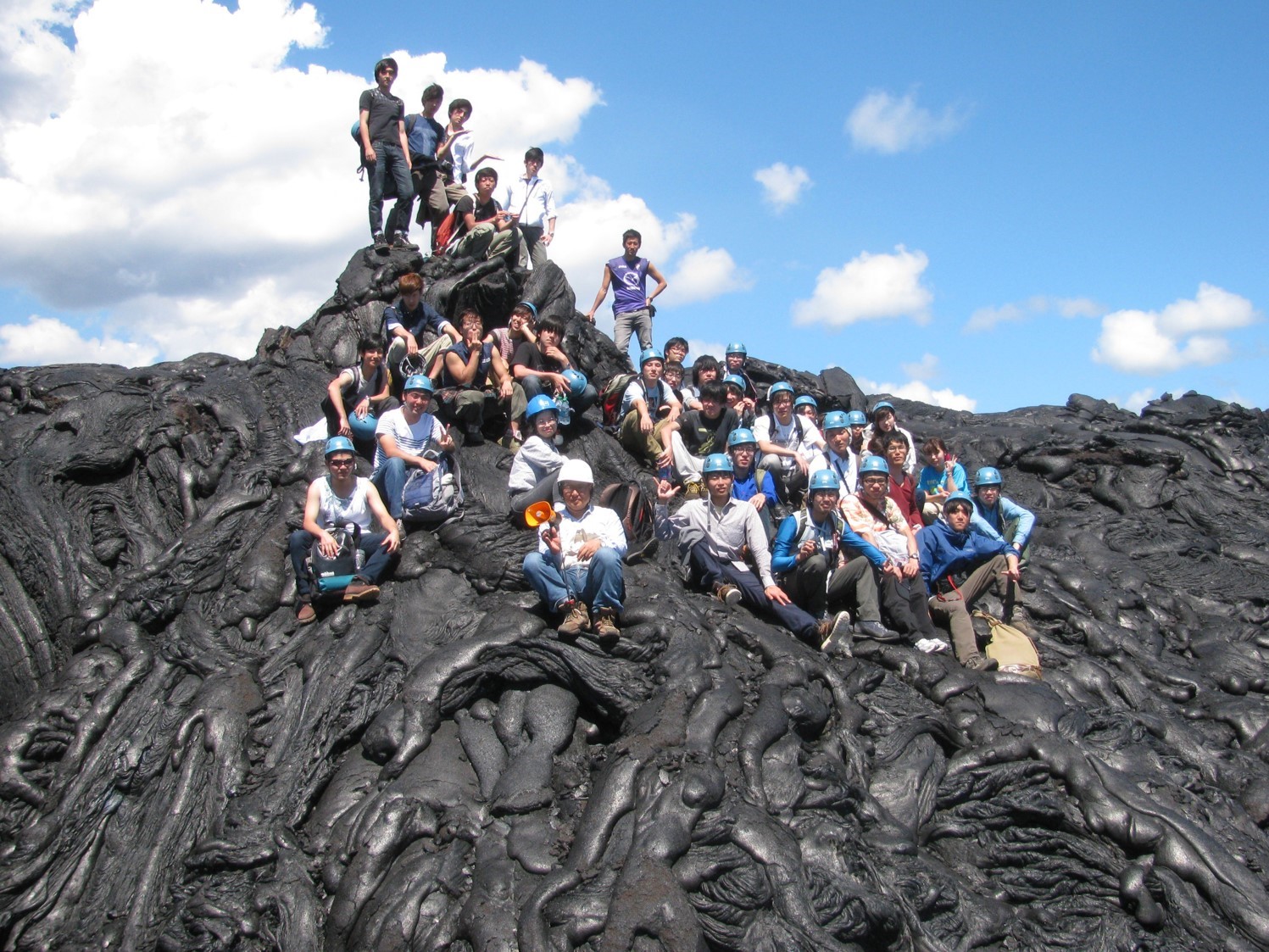
On the campus of the Guangzhou Institute of Geochemistry (GIG) of the Chinese Academy of Sciences (CAS), an elderly man is often seen: he is of average build, with black-rimmed glasses on his round face, a checked shirt neatly tucked into his jeans, and a black backpack over his shoulders, his stride firm and steady – all this reveals a refined and precise scholar.
He is Eiichi Takahashi, a world-renowned experimental petrologist from Japan who has made significant contributions to research on magma genesis, mantle plumes, and high-pressure phase diagrams.
Four years ago, after retiring from the Tokyo Institute of Technology (Tokyo Tech), he lost no time in moving to China to take up his new position as a full-time research professor at GIG. To carry on with his beloved research in Guangzhou, a city in southern China, is in his own words “my best retired life”.

Takahashi shows in his hand the high-pressure assembly: MgO octahedral pressure medium. (Image by GIG)
Lifelong Pursuit of a Teenage Dream
Eiichi Takahashi was born in Hamamatsu city, Japan in 1951. His passion for science can be traced back to his teenage years. When he was a junior high school kid, a teacher whom he was greatly indebted to inspired him: one should take seeking truth, rather than chasing after fame and wealth, as the ultimate purpose of life.
It was from there that his science dream took flight. Particularly mesmerized by rocks and volcanos, he, as a high school student, once wrote a letter to Hisashi Kuno, a well-known professor in petrology at the Tokyo University who he had never met. In the letter he raised seven questions about one of the professor’s studies.
“Quite surprisingly, he wrote me back!” Relating this anecdote, Takahashi, now almost 70 years old, is still visibly excited, not to say how ecstatic he was then. He had worked very hard ever since, determined to get into the Tokyo University to study earth science.
At last, the teenager’s dream came true. Takahashi went straight from his bachelor’s degree to PhD at the Tokyo University. After graduation, he went to the US to undertake postdoctoral research at the Carnegie Institute of Washington.
Later he came back to Japan and taught at the Okayama University and then Tokyo Tech, where he was one of the starting members of the Department of Earth and Planetary Sciences.
He has devoted his life to the research on mantle rocks and volcanic rocks by integrating indoor high-temperature and high-pressure experiments and the study of rock samples collected in the field, with the aim to explain magma genesis and ultimately understand how earth was formed in the first place and developed through time.
Throughout his career spanning over 40 years, what Takahashi most takes pride in is several groundbreaking achievements mostly made in the 1980s. In the early ‘80s, he and his supervisor Prof. Ikuo Kushiro determined for the first time the depth of where a variety of basaltic magma originates by conducting experiments that simulated the melting process of mantle peridotite 30 to 90 km deep in the Earth.
In the following years, Takahashi increased the pressure of his melting experiments considerably to 25 GPa, equivalent to the pressure 720 km deep in the Earth. In this way he investigated the possible chemical composition of the magma ocean which might have covered the Earth 4.5 Ga years ago, which opened a window into the study of the Earth’s magma ocean from the perspective of petrology and geochemistry.
Throughout the ‘80s, by using self-developed multi-anvil apparatus, Prof. Eiji Ito and Takahashi worked together to determine the nature of the 660-km-depth boundary which separates the upper and lower mantle.
Takahashi also utilized high-pressure experiments to study the origin of voluminous magma in the mantle plumes such as those in Hawaii and Columbia River flood basalt.
His research outcomes have been published in some of the world’s top research journals, such as Nature, Science, Journal of Geophysical Research, Earth and Planetary Science Letters, and American Mineralogist, and the papers have enjoyed numerous citations and guided the research development in several fields.
With his remarkable achievements, Takahashi won many international awards. At 36, he got the F.W. Clarke Award, which is presented by the Geochemical Society to honor a single outstanding contribution to geochemistry or cosmochemistry by an early-career scientist, with only one awardee each year.
At 65, he was elected AGU (American Geophysical Union) Fellow. Founded in 1919, AGU is one of the world’s most influential academic organizations in earth sciences. Starting from 1962 it elects Fellows among all its members annually to honor their pioneering research work, with the selection ratio smaller than 1 to 1000.
For Takahashi, science is his job, but more importantly his No. 1 hobby, even before classical music and fine art. He emphasizes more than once that in doing science what comes first should be curiosity – that is the pure desire to explore the unknown.
Only when one sees science in an artistic view can he enjoy it, and as a result he is more likely to achieve something big – this, he says, is the key to success for many great scientists, as well as the most important piece of advice he wants to share with young researchers. He also says that the best part of science is making friends with people from all over the world through connection in work. In regard to this, he specifically quotes “Is it not a delight to have friends coming from afar?”, a famous sentence from the Chinese classic Lunyu, or The Analects of Confucius.

Takahashi (front row, third from the left) builds his research team and laboratory at Tokyo Tech. (Image by GIG)
With love and passion, even hardships became tolerable. In 2009, he fell off a seaside cliff by accident when gathering samples on Japan’s Miyakejima Island. As he was burdened with heavy collected rocks, one of his feet hit the hard lava rock violently, resulting in an instantly broken ankle. Fortunately he survived thanks to the timely boat rescue.
This accident condemned him to two months in hospital, three months in a wheelchair, and one year with walking sticks. But even when he was in hospital, he asked his students to visit him for weekly seminars and discussion on research progress.
While telling these stories of hardship and danger in scientific exploration, he keeps his usual smile on his face.
As a matter of fact, in everyday conversation he is always radiating cheerfulness and enthusiasm that are more commonly seen in the young – that is a reflection of his optimistic nature and single-minded pursuit.

Takahashi (the one holding an orange loudspeaker at the center in the front row) takes undergraduates on a field trip to Hawaii for investigating lava. (Image by GIG)

86-10-68597521 (day)
86-10-68597289 (night)

52 Sanlihe Rd., Xicheng District,
Beijing, China (100864)

